Managing Information Systems – an in-depth look at Tesco Plc.
CHAPTER 1 – Introduction
1.1. INTRODUCTION:
In today’s world information is so vital and complex that there is a compulsion for innovative techniques that enables the processing and management of information for further usage. In this research an overall study of MIS (Management Information Systems) is conducted in terms of decision-making, optimisation of information and the processing of data across departments in an uncomplicated way, together with a critical evaluation of MIS in the organisation in an attempt to reveal the facts which are irrefutable and disconfirming.
1.2. PURPOSE OF THE STUDY:
The ultimate objective of the study is to investigate the extent to which the MIS is being used in Tesco in terms of decision-making, optimisation techniques and flow of information across departments. Since Managing Information System itself is elaborated and vague, the study is made more manageable by defining boundaries for all the topics under study. Also a range of critical evaluation is done on the MIS used by Tesco to defend or criticise the methods they choose.
The study also includes a literature review of MIS specifically in areas of decision-making, communication across departments and optimisation for academic knowledge. Finally personal and standard recommendations for future analysis and improvisation are also discussed for the benefit of the research. A research methodology is used for the complete study with references from books, websites and journals.
Limitations faced during the study and also limitations in the subject are also highlighted and discussed.
1.3. Managing Information System
Terry Lucey (2005) in his book “Managing Information Systems” has defined MIS as follows, “A system to convert internal and external sources into information and to communicate that information, in an appropriate form, to managers at all levels in all functions to enable them to make timely and effective decisions for planning, directing and controlling the activities for which they are responsible.”
The term MIS can be supported with other definitions such as, “MIS is defined as a system which provides information support for decision-making in an organisation” or “MIS is defined as an integrated system of man and machine for providing information to support the operations , the management and decision-making function in the organisation” or in a simpler way, “MIS is a computer based information system” or even “ MIS is defined as a system based on the database of the organisation evolved for the purpose of providing information to the people of the organisation.” [Waman S Jawadekar (2009)]
1.4. Information and its Management
Information plays a vital role in any organisation in regards to the decision making, plan preparation and the controlling of activities. Uncertainty is a dominating issue faced by the management, which effects the acceleration of the rate of change and timely decision making. It is essential for managers to be able to specify the information type required and the organisation’s MIS should be in a position to supply it.
CHAPTER 2 – Functionalities of MIS
2.1 Information flow between departments in an Organisation
Information flow across various departments requires intelligence and accuracy so that miscommunication or misinterpretation is not frequent. “Whilst it might be relatively easy to share knowledge across a group that is homogeneous, it is extremely difficult to share knowledge where the group is heterogeneous. Yet it is precisely the sharing of knowledge across functional or organizational boundaries…that is seen as the key to the effective exploitation of knowledge.” (Scarbrough and Swan, 1999, p.11)
2.2 Incomplete Information and Decision Making –
In reality this is not possible and managers are forced to use the information available. So Drucker describes the above scenario as “The managers will never be able to get all the facts he should have. Most decisions have to be based on incomplete knowledge either because the information is not available or it would cost too much in time and money to get it. There is nothing more precarious or alas, more common, than the attempt to make precise decisions on the basis of coarse and incomplete information.” (Drecker, Management Task, Responsibilities. Practices, 1993)
2.4 Role of data administration in decision making
It is essential that the organisation knows how to manage the information bank effectively so that a connection can be established between the management’s frameworks, comprising of the organisational elements with that of the organisation’s data. Hence data administration and database administration are contrasting terms and is not a “computer-oriented specialty”.
2.4 Phases of Decision Making
- First Phase – When we have a narrow view of the specifications of the process of decision-making, it is necessary that the process is neutral in terms of technology. Hence the requirements and the chances of an organisation, which is in the subconscious mind of the decision maker is the fact that drives the process. Finally the data administration is the supporting factor for the refinement of the raw materials required for the decision making process.
- Second Phase – The second phase in the process of decision-making is the recognition of opportunities and problems prevailing in the organisation. In this intelligence phase, the threats and chances present a circumstance for making managerial decisions with the constraint of matching the organisation’s responsibility. It is the role of the data administrator to understand the coincidence of the organisation’s response and the internal and external needs for decisions.
- Third Phase – The third phase, also known as the choice phase, involves the knowledge and acknowledgment of the organisation’s aims and objectives. The data administrator is implicitly required to work towards the demands of the organisation as an entity rather than working towards an individual user. In a nutshell, it is vital for the data administrator to have an in-depth understanding of the business processes undertaken by the organisation.
- Fourth Phase – The final, or the implementation, phase necessitates the organisation to incorporate the consideration of management operations. In this phase, apart from defining an outline for inculcating the solution into an action plan, the phase also enforces a need for a mechanism of monitoring and moderating the action to be established.
CHAPTER 3 – Tesco
3.1 BACKGROUND OF TESCO:
T.E. Stock in co-ordination with Jack Cohen consolidated their small scale industry and opened their first new shop by the name “Tesco” in the year 1929. By the end of 1939 Jack Cohen had afforded to open one hundred stores with a back-up of originate innovation in database and “Stock Control”. Since the Second World War, Tesco has seen steady growth, with success not only in the UK but also in EU countries like the Czech Republic, Hungary etc.
Tesco is now the UK’s biggest food retailer, engaging over 240,000 employees all over the world and has annual profits of over one billion pounds. Tesco’s website is the most popular among the retail food industries in the UK, having more than a million users registered online.
TESCO’S ORGANISATION STRUCTURE
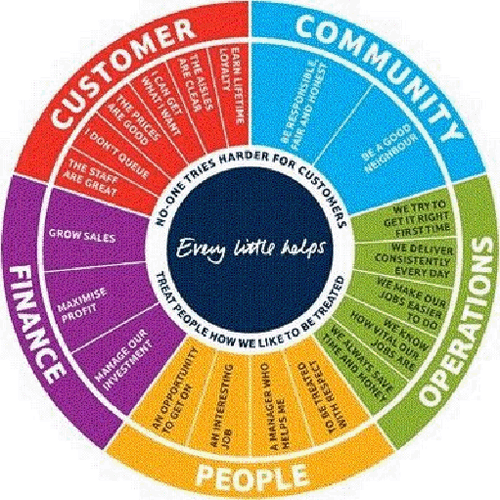
Fig 3.1: Organisation’s Framework of Tesco
3.2 TESCO’s DECENTRALISED ORGANISATIONAL STRUCTURE:
The organisational structure of Tesco is designed to be a decentralised or devolved structure, meaning that the structure is quite flat and uncomplicated. The ultimate reason behind the structure is to enable power to filter “Down the Line” so that people at the lower end of the tier can use the decision-making to operate the store.
Tesco’s framework provides a draft for the staff terms, the layout and pricing, allowing a flexible operation between the departments in the entire structure. This style of management gives an open window for the people working in the shop floor to interact directly with the customers, giving them the ability to influence and make decisions effectively.
Tesco is a prime example of a “Decentralised Organisational Structure”. Every store in the chain of supermarkets would have a store manager who has the authority to make decisions regarding the store they are in charge of. These store managers report to a Regional Manager, who in turn report to the sectional manager.
The advantages of having a “Decentralised Organisational Structure” are as follows:
- The top-level management can focus on making the most vital decisions. The decision-making process authorises and thus encourages the staff and increases the quality of the final outcome.
- A better realisation of the work environment is attained inclusive of the reaction towards the challenges, and variations are much more rapid in a “Decentralised Organisational Structure”.
- Authorisation brings in obligations and increases the likelihood of these being accepted and executed successfully.
The entire organisational structure of Tesco is a huge one; many levels are available, having a leader to administer each level. The leader reports to a senior leader making communication among the multi-level departments easier.
CHAPTER 4 – MIS in Tesco (Sonetto Channel Information System)
4.1 BACKGROUND
“Partner Relationship Management” is a significant online channel used for marketing in the case of multichannel retailers. By means of rendering with other “Affliate Networks” and “Shopping Comparison Sites” retailers can attain an online atmosphere to lure more customers to the website.
However the challenge is to provide all these interlinked online retailers with minute consumer-oriented information about the product in accordance with their different needs. Added to these requirements is the the inclusion and exclusion of products in the product catalogue in abidance with the availability of the product, competitive pricing and CPC level.
So this is an active market driven process which is to be taken care of by the IT sector. Hence a spry business driven system is a must for the dynamic market conditions and the failure of which can pave way for disgruntled customers, damage to the brand image, a decrease in sales and a hike in marketing costs.
4.2 BUSINESS CHALLENGE
Data feeds of over thirty different products are sent by Tesco.com to nearly fifteen online partners in the network every day, which includes the affiliates and shopping comparison websites. The information contained in the input feed has numerous amounts of products from different departments in the product catalogue. So it’s a mandatory requirement that Tesco.com needs to change the feeds and add on new partners in effect to the changes of the market environment.
As a result, before Tesco.Com could enlist IVIS group in the project, the IT department was experiencing huge demand from the retailers or business users who were managing the business processes.
The ultimate objective of Tesco.com is to improvise the ROI from the basic “Online Marketing Programme” and authorise business users to handle the working partners in a dynamic fashion.
4.3 BUSINESS SOLUTION – “SONETTO CHANNEL INFORMATION SYSTEM”
The “Sonetto Channel Information System” (SCIS) was implemented by the IVIS Group and was used by Tesco.com for their online system management and marketing programme. The SCIM is a part of the “Sonetto Retail Suite” , an application programme used for the management and control of information across the channels.
The CIM (Channel Information Manager) takes information in an individual feed and distinctly orients the data for every channel in the environment. The system takes pricing information, products and promotional information and applies business logic to accommodate the content information spontaneously for every channel.
Sonetto assures quality wherein the CIM is interconnected with pricing and product systems promising a real time, flexible and accurate delivery of data to all the channels.
4.4 PROCESSES SUPPORTED BY THE SCIM:
- The SCIM has a number of processes that is being supported with limited IT supported
- Transformation of the product information into the required input format and terminology as necessitated by every partner.
- Exclusion of products from the feeds in accordance to the business rules like the availability of stock in a dynamic fashion.
- Categorisation of the products for each retailer as per the requirement.
- Selection of products to be included in the partner feed list.
- Construction of automated data feeds as per the format requirement.
- A construction of online partner fellowship.
4.5 BUSINESS BENEFITS FOR CONSUMERS AND RETAILERS
The website Tesco.com is quite popular to the consumers for the purchase of electrical and electronic goods. Though there are sufficient benefits the uniqueness is in the advanced business agility while encouraging decision makers to progress the online market directly.
- Huge buying decisions for customers giving a wide range of products in the catalogue, thereby increasing the chance of purchasing.
- The affiliate and the price comparing websites have paved a privileged way for the online shopper which is far more exiting than the Tesco.com website.
4.6 FINANCIAL AND OPERATIONAL BENEFITS
- An impressive 20% increase of click rates from the partner’s side.
- The DBA is not a requirement anymore on a day-to-day usage thereby increasing the functioning cost.
- A fast process of implementation of products information feed reduced from 2 weeks to just few hours.
- Also the addition of new partners has been reduced from weeks to days.
The following diagrams show the difference in outcome before and after the implementation of the SCIM system.
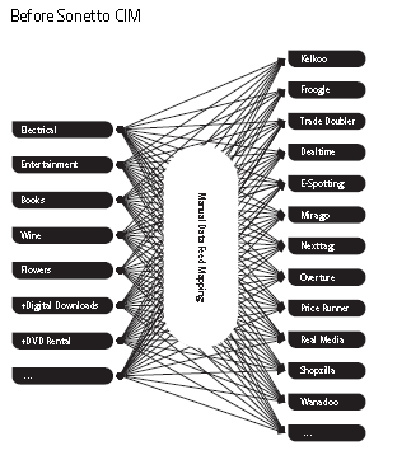
Fig 4.1: Tesco’s mapping of departments before implementing SCIM
From the above diagram, it can be seen that Tesco had a poor organisation of departments without the use of an organised MIS.
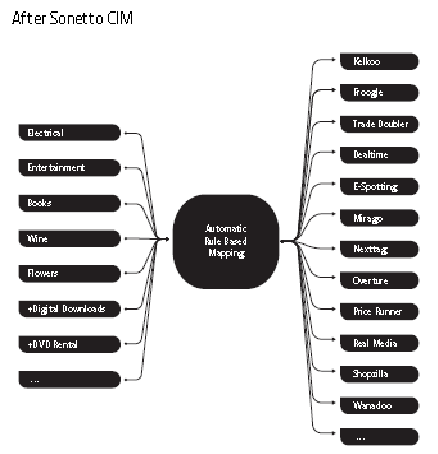
Fig 4.2: Tesco’s departments after the implementation of SCIM
After the implementation of the Sonetto’s Channel Management System, an organised structure of departments is obvious.
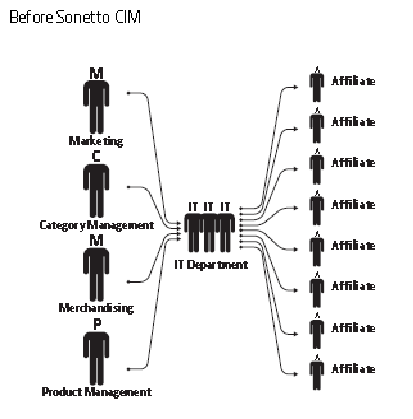
Fig 4.3: Tesco’s communication network before SCIM
Before the implementation of SCIM, Tesco had an irregular communication between departments
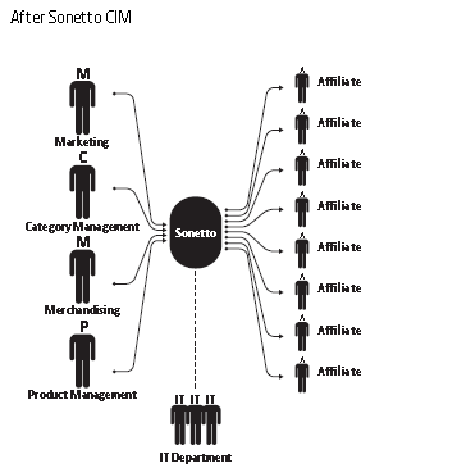
Fig 4.4: Tesco’s communication network after SCIM
An organised communication network is obvious from the above diagram after its implementation.
CHAPTER 5 – Tesco’s Management of Business Processes using MIS
5.1 Tesco’s Business Processes, Management and effectiveness of MIS –
MIS is an outcome of a multi-disciplinary approach with respect to the management. Also MIS is quite dynamic in nature immanent to change with the fluctuations in the business management process. MIS interact with the inner and the outer environments of the business process and provides a effective changes required.
5.2 “Management by Exception”
The MIS should be exceptionally capable of allowing vital deviations as per the demand of the performance standards based on the principle of “Management by Exception”. In this method the Pareto’s rule of 80:20 can be implemented for the management of the business process. For effective management with efficiency without time loss, a report for all the possible standard deviations is essential and should be known by the data administrator in the organisation. Hence the process of “Management By Exception” hold a magnificent control over the business process of the organisation.
5.3 Tesco’s Business Processes
Tesco used an innovative strategy for the growth of the business and it has been dominating the sector for a long period of time. The implementation of innovation and knowledge, innovation of products, supply chain management, changing towards the need of the customer and formatting of the Tesco stores are some of the strategies used. In the case where Tesco is not individually successful, an external partnership is made for achieving the same target and this strategy has also been the core foundation for most of the operations.
Tesco has got a strong influence in the grocery retail market, the finance sector and also in the online retail business. The grocery retail market has persistently been a huge source of revenue, reaching a stunning sale figure of £59.4 billion in the past year. Also, Tesco has 12 international markets spread across Europe, the United States and Asia, yielding 30% of the revenue. The acquisition of the RBS’s share by the Tesco’s personal finance sector boosted the already flourishing business. The other business processes managed by Tesco are the online shopping sector, dunnhumby- a research business, telecom etc; yielding to added profit.
Towards the core of the Tesco’s business model is the objective of improving the customer satisfaction ratio. Therefore the ultimate aim is to make the shopping experience easier and lowering the prices with a variety of options. Also important is maintaining a pleasant neighbourhood, being fair and responsible, demonstrating honesty in dealings and to make everyone welcome at Tesco.
CHAPTER 6 – Recommendations
RECOMMENDATIONS:
- The MIS framework can be made more user-friendly as most of the users of the system are naive to newer applications. It is the responsibility of the software developers to not sophisticise the application so much that it would become difficult to operate.
- Tesco’s overall expense for implementing the system in the United Kingdom alone is about £1 million. The maintenance of the entire is system has been shown to be more costly than the building. So the management can formulate a plan to bring down the maintenance cost by either changing the system’s architecture to introduce simplicity or by using better technology to counter the same problem.
- Another consideration for the MIS is that the system needs to be updated frequently with the racing technology as the system might become outdated and the cost to update it at a later date would be expensive. The product needs to be under a steady review and alterated in order to meet the corporate requirement of the information.
- Tesco should essentially implement the Pareto’s principle of 80:20 for a “Management by Exception” for an efficient management of the business process.
- The design of the MIS should be in-line with the organisation’s structure.
- The MIS can be controlled by the higher management where decision-making is focused.
- Tesco can implement an integrated MIS where a communication to the top management in the hierarchy is attained by setting up a report in-built by the MIS sent directly to top management.
- Since Tesco provides ample incentive for the MIS, Tesco can focus the result and the efficiency; the MIS should be tuned to support this culture and promote the efficiency.
- MIS can be tuned to be more flexible so that when the organisation moves through the phases of growth, maturity and downfall, the MIS should be able to give timely support in all these phases to the management.
- A strategy that could be well implemented is that the MIS should possess the learning mechanism so it can scrutinise the cause and effect of any scenario. A record can be maintained of such scenarios so that the data administrator can analyse and produce the best solution in times of decision making.
CHAPTER 7 – Conclusion
“The ultimate goal of any Managing information System is optimisation” ( Jackson D.Ford ,1987 ). In a nutshell the Management Information System is the heart and brain of the organisation. As MIS is responsible for vital processes like decision-making, management of the business processes and communication without misinterpretation between the departments of the organisation, the significance of the MIS should be acknowledged by the management. Also MIS plays a very significant role in building the organisation’s behaviour, as a result of which goals are set for successful attainment.
Though an organisation may have many strategies for success, the MIS would almost contribute 65 % towards the success. Hence the appropriate MIS design and maintenance is a must in any organisation. The organisation’s business strategy and the MIS design should have a perfect coincidence.
The above report examines the vital functionality of MIS in Tesco in a general point of view for the benefit of the organisation and for academic knowledge gain.
Bibliography:
Ajayi, I. A. and Omirin, Fadekemi F. (2007) The Use of Management Information Systems (MIS) In Decision Making In The South-West Nigerian Universities [Internet], Vol. 2 (5), pp. 109 – 116, May 2007. Available from: < http://docs.google.com/viewer?a=v&q=cache:UgIj6zKjJNsJ:www.academicjournals.org/ERR/PDF/pdf%25202007/May/Ajayi%
2520and%2520Fadekemi.pdf+managing+information+systems+decision+making&hl=en&gl=uk&pid=bl&srcid=ADGEE
Sg9imTS9pJqB45DIAD-V547lTPgUuQYr83sHU7X1cNBA-YLUhSeIfTIHM4XF2Gm98XQT0E155QzeF_JYzMNlit2WKylw41
cDGz5h_YwDmBl7lzxlpOatQwGxav_dbRYVkR6HAnT&sig=AHIEtbSNXKeBst6CANx-mJThaxkpZtnYng> [Accessed 10 May 2010]
Blurt it (2009) What Does the Organizational Structure for Tesco Look Like [Internet]. Available from:
<http://www.blurtit.com/q891652.html> [Accessed 27 May 2010]
Cogmap (2009) Tesco Plc Organizational Chart [Internet]. Available from:
<http://www.cogmap.com/chart/tesco-plc> [Accessed 01 June 2010]
Computer Weekly (2008) Tesco’s IT strategy to support international expansion [Internet]. Available from:
<http://www.computerweekly.com/Articles/2008/05/30/230880/tescos-it-strategy-to-support-international-expansion.htm> [Accessed 08 June 2010]
Drucker (1993) Management Tasks, Responsibilities, Practices.
Ivisgroup (2006) Tesco Channel Information Management [Internet]. Available from:
<http://docs.google.com/viewer?a=v&q=cache:fx8Tyfz_EKgJ:www.ivisgroup.com/ivis/docs/67.pdf+managing+information+
systems+%2B+tesco&hl=en&gl=uk&pid=bl&srcid=ADGEESghqAeHL2PxxxuxCeoTXjTvnoG5vyLMfT8_zokONLGc33ZwPaWGY-
HfEe-YtFsSRvcAec9WefQXuHBpwJ-vwf5UNbCMzP0TmJX3PiNhpRI6wtYKpRBpRxKk9hkoun-AyVhWIFk4&sig=AHIEtbS24KfX3ceB8Nl-
7Pl_xpvPER_YyQ> [Accessed 08 June 2010]
Jack Rabin, Edward M. Jackowski (1988) Handbook of Information Resource Management [Internet]. Available from:
<http://books.google.co.uk/books?id=0yC2O5BUfQcC&pg=PA178&dq=management+informations++and+decision
+making+in+an+organisation&cd=2#v=onepage&q&f=false> [Accessed 01 June 2010]
Swan JA , JC Preston and Scarbrough H. (1999) Knowledge Management: A literature Review. London: Institute of Personnel Development.
Terry Lucey (2005) Management Information Systems [Internet]. Thomson Learning. Available from:
<http://books.google.co.uk/books?id=A0bu30rNgJsC&printsec=frontcover&dq=managing+information+systems&
hl=en&ei=aeMMTM_PGMuN_Aal5bDxDw&sa=X&oi=book_result&ct=book-thumbnail&resnum=2&ved=0CDMQ6wEwAQ#v
=onepage
&q=managing%20information%20systems&f=false> [Accessed 25 May 2010]
Tesco PLC (2009) Markets Served and Business Model [Internet]. Available from:
<http://www.tescoplc.com/annualreport09/businessreview/business_model/> [Accessed 08 June 2010]
Tesco Steering Wheel. (2008) [Online Image]. Available from:
<http://3.bp.blogspot.com/_K_3jgRj_Rj4/SM3D36Ucs9I/AAAAAAAABcY/TCl-3whFh_A/s400/Tesco+Steering+Wheel.bmp> [Accessed 27 May 2010]
Waman S Jawadekar (2009) Management Information Systems – Text & Cases [Internet]. Tata McGraw-Hill Education Private Limited. Available from:
<http://books.google.co.uk/books?id=9hm1-xNYbIcC&lpg=PA6&dq=decision%20making%20and%20MIS%20
definition&pg=PA14#v=onepage&q=decision%20making%20and%20MIS%20definition&f=true> [Accessed 10 May 2010]
321books (2007) Tesco History – Sir Jack Cohen’s History [Internet]. Available from:
<http://www.321books.co.uk/catalog/tesco/history.htm> [Accessed 27 May 2010]